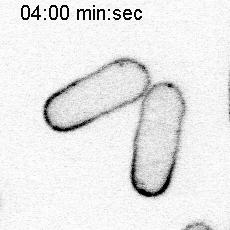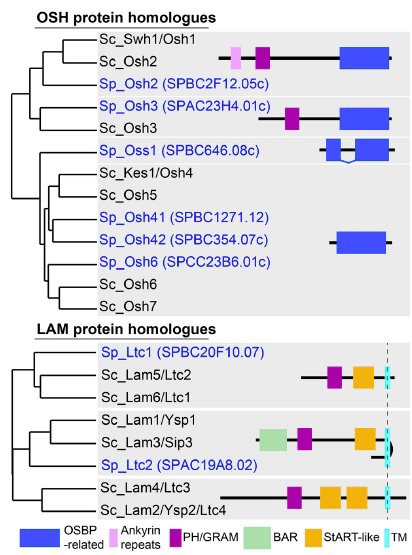Actin and sterol flow
Sterols are critical components of biological membranes, regulating their biophysical properties. Sterols also play important roles in vesicular trafficking and signal transduction. They also serve as precursors of hormones, bile acids, vitamin D, and energy storage molecules. All eukaryotes use sterols, which come in different flavors: cholesterol in animals, sitosterol in plants, and ergosterol in fungi. In animals, their dysfunction cause severe pathologies, such as Niemann–Pick disease type C, hypercholesterolemia, or sitosterolemia. In fungi, ergosterol is essential for viability and serves as a major target of antifungal drugs.
Sterols are synthesized in the ER but principally accumulate in the plasma membrane. Thus, mechanisms of sterol transport are required to move the sterols from their place of synthesis to their site of action. In contrast to proteins, which are transported by vesicles, sterol movement is largely independent of vesicular trafficking and instead uses lipid transporters that extract sterol molecules from one membrane and transfer them to another.
 Cells labelled with the D4H sterol biosensor and treated with CK-666 to inhibit Arp2/3 activity
Cells labelled with the D4H sterol biosensor and treated with CK-666 to inhibit Arp2/3 activity
We have established the fission yeast as a simple model system in which to study sterol movement in the cell. By introducing a fluorescent sterol biosensor D4H, sterol-rich membranes can be visualized and tracked over time. While D4H normally decorates the plasma membrane, we unexpectedly discovered that inhibition of Arp2/3-dependent actin assembly leads to the transfer of sterols away from the plasma membrane and into endosomal compartments. Through an initial characterization of two families of predicted sterol transfer proteins, the LAM and OSH families, we further discovered that a single LAM-family protein, Ltc1, mediates sterol transfer away from the plasma membrane.
This observation, together with the overall relative simplicity of the fission yeast cell, suggests that use of this model organism will help discover principles of sterol distribution in cells. We are particularly interested in dissecting the role of the actin cytoskeleton in this process.

LAM and OSH families in S. pombe.
